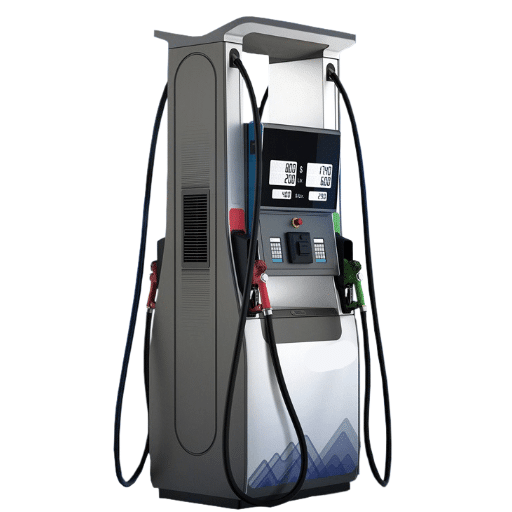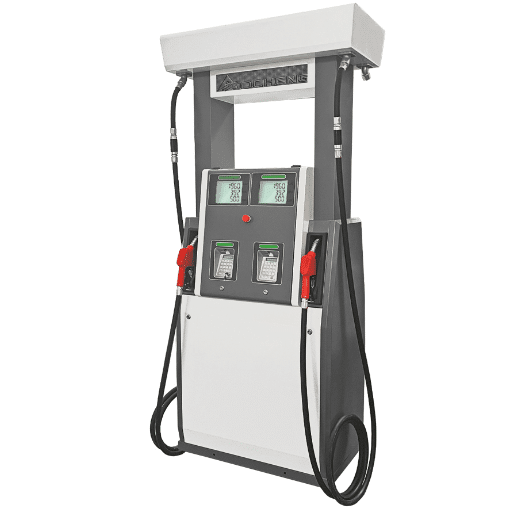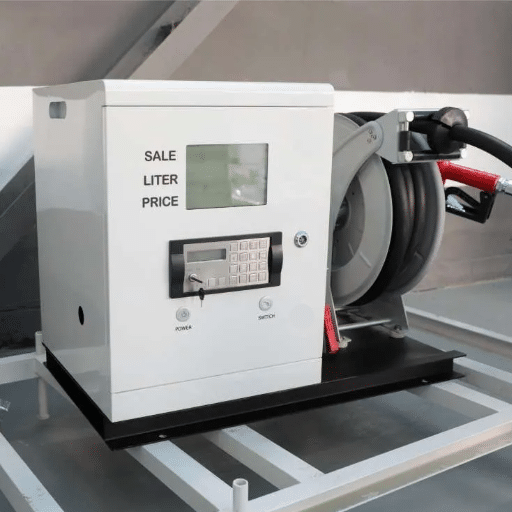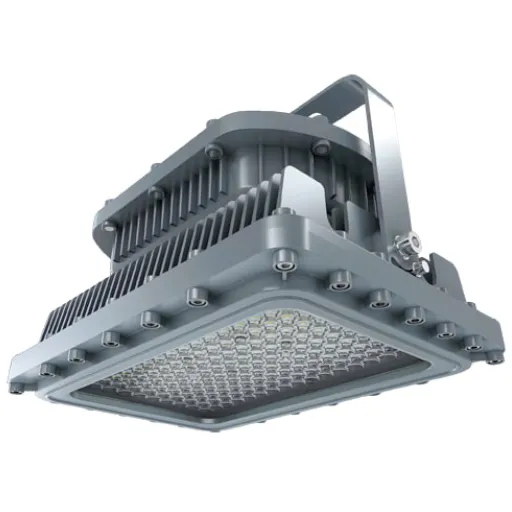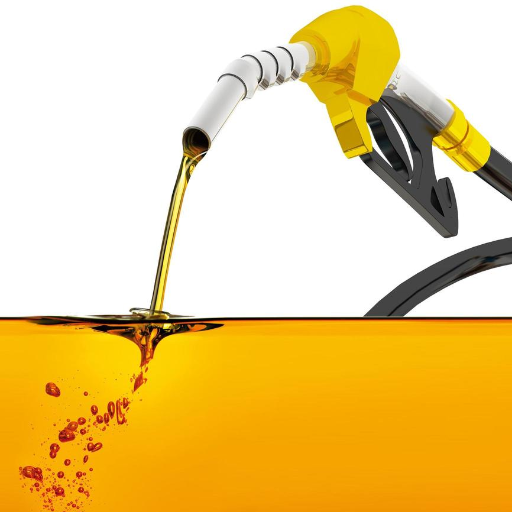Gas stations are not only complicated but also well-equipped hotels to cater to the daily fueling needs of millions of drivers. However, the advanced networks comprising systems and components work quietly in the background to smoothly perform operations that seem simple. Learning the important parts of a gas station – fuel pumps, dispensers, and the Point of Sale (POS) system – opens up the technology, mechanics, and integrations that enable modern convenience. This article delves into these vital elements deeply, revealing the workings of every component and how it leads to efficient, dependable service. If you are a gas station owner, an industry person, or just a curious one wanting to know the secrets of fueling stations, this guide will give you the precious kernel of the infrastructure that supports them.
Overview of Gas Stations

Gas stations are facilities that offer service, mainly fueling for vehicles with gasoline and diesel, and other products and services as well. They are indispensable parts of the transportation system, allowing vehicles to be powered and operational easily and quickly. A gas station usually consists of fuel storage tanks, fuel dispensers (pumps), and point-of-sale (POS) systems that are essential for smooth transactions. Many gas stations provide additional services like car washes, convenience stores, or maintenance to catch a wider range of customer needs. The gas station’s main purpose is to enable the safe, efficient, and uninterrupted dispensing of fuel to the motorists.
Definition and Purpose
A gas station, which is sometimes called a fueling station, is a commercial establishment built for the purpose of storing and dispensing petroleum-derived fuels like gasoline or diesel to motor cars. The plant usually consists of underground tanks for fuel, fuel dispensers, and a point-of-sale (POS) system for managing customer payments. The main goal of a gas station is to be a quick and easy place for drivers to refuel their cars. Besides the main operation, a lot of gas stations have opened up to even more services, such as selling items in a store, providing a car wash, or doing minor repairs on cars, thus meeting various consumers’ needs. This set of services not only increases the overall utility and convenience but also helps the gas stations to be more sustainable in their operations.
Types of Fuel Stations
Based on their operational modes, services, and fuel types offered, fuel stations can be divided into several recognizable categories. These are:
Traditional Gas Stations
The most widely used fuel station type is traditional gas stations; they supply gasoline and diesel to cars with internal combustion engines. Very often, they run as independents or under the umbrella of one of the major oil companies and even have a variety of services on the side, such as convenience stores or basic auto care.
Self-Service Fuel Stations
Self-service stations are built around the concept of cost savings; they do not require customers to depend on attendants for refueling their vehicles. The operating costs at such stations, which are typically positioned in urban settings, are drastically lowered, and the use of these stations is widespread worldwide.
Full-Service Fuel Stations
Full-service customer stations are those that offer a more customer-centric experience; these stations have attendants who pump fuel, wash windshields, and do simple checks of the vehicle’s condition. Although not very common now, full-service stations are still liked by certain customers for their convenience and extra help, especially in places where this type of service is accepted or even required by law or custom.
Electric Vehicle (EV) Charging Stations
The increasing popularity of electric cars has resulted in EV charging stations being set up, which are modern-day equivalents of gas stations. These stations are equipped with Level 1, Level 2, and fast-charging options, thus being able to cater to the need for eco-friendly transportation solutions that are on the rise.
Alternative Fuel Stations
Such stations are for those who have vehicles running on specialized combustibles like CNG (compressed natural gas), LPG (Liquefied Petroleum Gas), hydrogen, and biofuels. Moreover, they are positioned in areas that are more open to the adoption of alternative fuel technology.
The array of fuel stations mirrors the changing energy supply situations and consumer demands, which ensures that access to and adaptability for the present and future mobility needs are there.
Importance of Modern Fuel Distribution
Modern fuel distribution plays a pivotal role in the global infrastructure by providing a constant supply of energy necessary for transportation, industry, and daily life. The efficiency of distribution networks eliminates bottlenecks in supply chains, thus reducing disruptions that could affect economic stability and productivity. High-tech fuel distribution systems have digital innovations like real-time tracking, predictive analytics, and automated delivery processes as their features, which make them very reliable and accurate. They also help the integration of renewable and alternative energy sources, making the transition to less polluting fuels easier and more sustainable. Modern fuel distribution not only addresses the rising energy demands but also ensures energy access, encourages environmentally friendly practices, and keeps the economic growth going.
Key Components of Gas Stations

Fuel Dispensers
Their function is to pump and meter the fuel supplied to the vehicles, thus guaranteeing the proper measurement and delivery.
Underground Storage Tanks (USTs)
Store fuel in a safe manner, equipped with safety measures to avoid leaks and contamination.
Payment Systems
Make payments easy using various ways, such as card readers, mobile payment systems, and cash.
Canopies and Lighting
Are the very elements that make the process of refueling safe and convenient by providing cover and light.
Convenience Stores
Apart from selling snacks, beverages, etc., they also provide basic customer support, which is an important factor in customer experience.
Safety Equipment
This comprises fire extinguishers, spill containment tools, and emergency shutdown systems, which are there to handle fire hazards quickly and efficiently.
All these elements together constitute safe, dependable, and convenient gas station operations.
Fuel Pumps and Dispensers
Fuel pumps and dispensers are really the backbone of gas stations’ daily operations, as they meet the need for safe and accurate fuel delivery to vehicles. The modern fuel pumps are equipped with sophisticated metering techniques, which guarantee exact dispensing, thereby reducing errors and losses of fuel to the barest minimum. Usually, they come with user interfaces like keypads and digital screens, which not only help but also make the payment and fuel selection processes very smooth.
Dispensers are made to provide multiple types of fuel, usually having different nozzles for gasoline, diesel, and sometimes alternative fuels like ethanol blends. Risks at refueling points are reduced by safety devices such as automatic shut-off valves and breakaway couplings. Besides, many dispensers now come with monitoring systems that not only track flow rates but also detect possible leaks, which is in line with the strict environmental regulations.
To sum up, it is the strong mechanical systems combined with the latest technology that make fuel pumps and dispensers not only dependable and efficient but also compliant with safety regulations.
Understanding Nozzles and Hoses
Nozzles and hoses are the main part of a fuel dispensing system, which have been designed to keep fueling operations efficient, safe, and precise. The fuel nozzles are made with sophisticated features like the automatic shut-off mechanisms that stop the flow when the tank is full, thus preventing overflowing and spillage. Moreover, modern fuel nozzles sometimes have vapor recovery systems as part of their functionalities, which capture and redirect the harmful emissions, thus keeping in line with the environmentally-friendly standards.
Hoses, however, are manufactured to cope with high-pressure situations and to be resistant to a wide variety of fuel types, thus guaranteeing their longevity and operability. They are made of special materials, such as neoprene or nitrile, which are not only resistant to abrasion and chemical degradation but also to extreme temperature fluctuations. Also, the tensile strength of the braid reinforcement that is incorporated into the hose is an additional factor of reliability that prevents leaks and ensures long-lasting performance.
Nozzles and hoses together are put through a series of tests that are very strict to make sure that they meet the safety and environmental standards of the industry, thus being the pillars of the trustworthy fuel dispensing systems. Their use of strong materials and state-of-the-art technology symbolizes the commitment of the industry to safety, efficiency, and sustainability.
Fuel Storage and Storage Tanks
Fuel storage tanks are specifically built to handle the safe storage and management of liquid fuels, which include gasoline, diesel, and kerosene, for both commercial and industrial sectors. These tanks are usually made out of strong and long-lasting materials such as steel or fiberglass, which contribute to the tanks’ durability and resistance to corrosion. The two main types are aboveground storage tanks (ASTs) and underground storage tanks (USTs), and each of them has specific operational requirements and regulatory compliance.
Along with the basic features, modern fuel storage systems have gone a step further to include secondary containment systems, leak detection technologies, and venting systems, which together help mitigate the environmental risk and regulate the pressure properly. The tanks’ longevity and environmental safety are contingent on regular maintenance, correct installation, and compliance with local laws. Besides, design standards that are changing with time put more stress on sustainability, with some systems even having eco-friendly fuel compatibility and emission reduction technologies as their core features. The very tech-savvy built-in fuel storage Features keep it safe, efficient, and green in the case of both large and small applications.
Point of Sale Systems in Gas Stations

In gas stations, Point of Sale (POS) systems are required for handling transactions, monitoring sales, and increasing operational efficiency. These systems provide seamless payment options for both fuel and convenience store purchases for customers and mostly accept a wide range of payment methods such as cash, credit or debit cards, and mobile payments. Present-day POS systems are connected with inventory management tools, which allow the operators to control the stock levels and make the restocking process faster and easier. Also, they are made more customer-friendly by providing loyalty cards and quick checkout facilities. Trustworthy and easy-to-use POS systems play a major role in the success of daily operations at gas stations.
Overview of Gas Station POS Systems
Modern POS System Features
Modern point-of-sale systems for gas stations are made to fill the gas retailers’ specialized needs with efficiency in the total process of operation. The systems have the capability for forecourt integration, which means the fuel dispensers will be connected for communication to take place seamlessly, and monitoring will be done in real-time. Sophisticated inventory management features will assist in controlling the inventory of both the fuel and the items in the convenience store, therefore, leading to zero downtime and zero stockouts.
Security is the topmost aspect, and almost all the systems are EMV compliant to grant secure transaction processing and prevent the occurrence of fraud. On top of that, the integration of fleet card acceptance and personalized loyalty programs gives gasoline stations more ways to win over and keep consumers. Cloud-based systems are very much in trend as they provide the convenience of data access from any place and make system upgrades easy.
Real-time reporting and analytics capabilities, in addition, help owners and managers with insights into sales, fuel consumption, along the overall performance of their establishment. It is through the combination of these features that the modern gas station POS systems can streamline their operations, make customers happy, and maintain their business in a tough market.
Gas Station Credit Card Processing
The uninterrupted processing of credit cards is a factor that is pivotal for the gas stations to have a full and happy clientele. The credit card processing at the gas station is not the same as retail credit card processing systems since gas stations require systems for fuel pump integration that handle authorization and payment capture right at the pump. Moreover, advanced processing systems deal with fleet cards like WEX and Voyager, which are the main sources of fuel payments for businesses.
One factor that plays a major role in this whole process is security, as fraud prevention at the pumps has become quite hard owing to the outdoor card readers used at stations, and thus, the stations are classified as high-risk for fraud. To safeguard the customers’ card information and reduce the risk associated with fraud, compliance with PCI DSS (Payment Card Industry Data Security Standard) and the use of EMV chip-enabled card readers are obligatory. As a matter of fact, the modern systems often come with pre-authorization technology for the verification of sufficient funds, at the same time adjusting the final charges according to the amount of fuel dispensed.
Going for a trustworthy credit card processor means quicker transactions, less time being offline, and having a very clear fee structure, which is crucial for budget control. Offering features like support around the clock, live transaction monitoring, and connecting to sales systems are ways to increase the efficiency of operations. Gas stations will thus be capable of offering their customers the security and convenience of multiple payment options.
Impact on Customer Experience and Satisfaction
The installation of effective credit card processing systems greatly improves the customer experience by cutting down on wait times and providing transactions that are seamless and secure. Consumers appreciate payment methods that are fast, trustworthy, and widely accepted, thus creating an environment of trust and convenience. Among the newest technologies are contactless payments and mobile wallet integration, which are the main concern of the advancing consumer preferences, making the purchasing process modernized and user-friendly. Besides, the whole processing of transactions is so reliable that it has practically eliminated errors and disputes, thus maintaining the smoothness of customer experience and even increasing overall satisfaction. In this way, the gas stations that can fulfill these expectations will not only win but also target customers for the long term and strengthen their competitive position in the market.
Customer Experience and Satisfaction

To improve customer experience and satisfaction, businesses need to recognize customer needs, offer uniform quality, and render support without delays. Working on transparent communication, addressing criticism, and customizing interactions will strengthen trust and loyalty. Furthermore, equipping employees with the right mindset when it comes to caring for the customer and using instruments such as surveys or feedback forms will aid in locating the spots that need improvement. On the whole, overcoming and meeting customer expectations is what determines the success of a business.
Streamlining the Payment Process
The efficient processing of payments is an indispensable factor in the creation of happy customers and the keeping of a business running smoothly. In order to realize this integration, companies are allowed to use up-to-date payment technologies like contactless payment systems, mobile wallets, and EMV chip card readers that provide secure and quick transactions. The installation of one payment hub that offers various payment methods, such as credit/debit cards, mobile wallets, and loyalty points, helps through the checkout process not only by speeding it up but also by reducing the potential for making mistakes. Furthermore, using a cloud-based point-of-sale (POS) allows for the tracking of payments in real-time, which leads to increased financial transparency and better reporting. To make the customer experience better, automated invoicing, digital receipts, as well as easy-to-use interfaces are some of the ways companies have gone about adopting payment security standards like PCI DSS and thus ensuring compliance. The combination of these practices results in more efficient payment processing and ultimately, the building of trust between the company and the customer.
Inventory Management Strategies
The management of inventory in an efficient manner is imperative for the smooth running of operations, keeping the costs down, and satisfying customer needs. Some of the main tactics are the adoption of just-in-time (JIT) inventory, which eliminates holding costs by aligning replenishment with the needs of production; the use of demand forecasting algorithms that predict very accurately the market trends; and the application of ABC analysis to classify inventory and control it by looking at its value and the rate of consumption. Furthermore, technology adoption, like the use of inventory management software, gives the company a clear view of stock levels at all times, which minimizes mistakes and, at the same time, improves the accuracy of the replenishment process. The combination of these strategies creates a situation where there is neither too much nor too little inventory, which is a winning scenario in the business of making profits and in the area of having a strong supply chain that can withstand shocks.
Loyalty Programs and Customer Retention
Loyalty programs are the ways of keeping customers who would otherwise go to another store, and making sure they stay with you in the long run, as they are Loyalty programs are usually offered through different means, such as points, membership levels, and exclusive rewards, giving customers the feeling of having an added value equal to that of their loyalty. Retaining a customer has turned out to be remarkably more economical than getting a new one, and loyalty programs that have been successful in boosting the lifetime customer value (CLV) are proof enough.
The best loyalty programs offer personalization on a high level since they are taking advantage of customers’ data to provide personalized service and benefits even more. By giving special discounts, letting the customers be the first to know when new products come out, or giving bonus gifts on anniversaries, the exclusivity of the brand is increased, and the emotional bond between the brand and the customer is also strengthened. Moreover, technology comes into play in a big way, as the new age Customer Relationship Management (CRM) tools empower program management to be done in a seamless manner and engagement metric tracking to be done with high precision.
Loyalty and value partnership is something that businesses can make into a win-win situation, through loyal customers becoming brand advocates. The situation guarantees that the revenues will grow steadily while the brand remains a step ahead of the competition in the tumultuous marketplace.
Efficiency and Profitability

Calibration of Fuel Dispensers
Calibration of fuel dispensers is necessarily a thoroughgoing process that guarantees not only accurate fuel measurement but also adherence to the regulatory standards. A properly calibrated dispenser eliminates the discrepancies between the fuel actually dispensed and the amount shown, thus building consumer trust and satisfying the legal metrology requirements. The common practice includes testing the meter of the dispenser with a certified reference container or flow meter to confirm its accuracy. If inaccuracies occur that are beyond the allowable tolerances established by the industry or authorities, then corrections are made. Carrying out a regular calibration also secures against the financial aspect of over-dispensing resulting from the lack of customer trust due to under-dispensing. Calibration of dispensers is suggested at intervals or after any change in the system, like repair or changing parts, for reliable operation and compliance.
Managing Spills and Safety Protocols
In order to handle the spills, I promptly contain the situation by using appropriate absorbent materials and isolating the contaminated area to stop the spread. I also observe the safety rules set up, which include wearing personal protective equipment (PPE) that is mandated and disposing of hazardous materials according to the prescribed methods. Moreover, I make a detailed record of the occurrence and take steps to reduce the possibility of similar events in the future, thus ensuring both safety and compliance with regulations.
Regulatory Compliance for Station Owners
Owners of stations have the paramount duty to guarantee regulatory compliance, which will help them keep up with operational standards and free them from the fear of penalties. The main regulatory focus is on the areas of environment, fuel storage, and safety at the workplace. The owners have to follow the Clean Water Act (CWA) and Resource Conservation and Recovery Act (RCRA) by installing the proper spill containment systems, performing regular inspections of underground storage tanks (USTs), and disposing of hazardous waste properly according to federal and state guidelines. Daily record-keeping is a must, and the documentation of inspections, maintenance, and incident responses should be available for auditors in a very short time.
Furthermore, compliance with standards of the Occupational Safety and Health Administration (OSHA) is fundamental to promoting the health of the workforce. Among the requirements are adequate training, provision of personal protective equipment (PPE), and carrying out assessments of the workplace for hazards. Getting the necessary permits, being aware of the changes in regulations, and adopting industry best practices are all factors that add up to the long-term success and sustainability of the station operations. A regular interaction with the regulators and professional auditors can do the stations a lot of good by revealing specific compliance issues and pinpointing areas where improvement is necessary.
Reference Sources
“Assessment of Health, Safety, and Environmental Risks of Zahedan City Gasoline Stations”
“Analysis of a Gas Station Hybridization with a Solar Thermal Plant by Using ETAP”
Frequently Asked Questions (FAQs)
What are the main parts of a gas station?
A gas station, in general, is made up of a few central elements such as the fuel pumps, the storage tanks, the convenience store, and the signage. The fuel pumps are the places where customers are able to refill their vehicles with fuel, and the storage tanks are the ones that contain the petrol or gasoline. Furthermore, the presence of signage is extremely important because it not only attracts customers but also provides details regarding the prices of fuel and the services that are available.
How do fuel pumps work in a gas station?
In a gas station, the fuel pumps work by taking the fuel from the underground storage tanks and then letting it flow through a nozzle into the customer’s car. New fuel dispensers are fitted with state-of-the-art technology that assures the correct amount of fuel flows and the right volume of fuel is dispensed. This technology also comprises leak detection systems that are put in place to avert environmental disasters.
What is the importance of customer satisfaction in the gas station industry?
Customer satisfaction is very important in the gas station industry as it is one of the main factors that will determine whether or not a customer will return to the station. If the customers are happy, they will be more inclined to come back, particularly if the staff at the service station is friendly and helpful, the place is clean, and facilities like convenience stores and loyalty programs are available.
How does payment processing work at gas stations?
Payment terminals are utilized by gas stations for the purpose of securely processing payments. Customers are allowed to pay in a number of different ways, including credit cards and fleet cards, through point of sale (POS) systems. The use of these systems not only speeds up the payment process but also makes the customer experience more pleasant by eliminating long wait times during transactions.
What role does inventory management play in gas station operations?
Inventory management is very important for gas station owners since it allows them to keep track of the sales data of fuel and store items. Proper inventory tracking helps in maintaining the stock at the desired levels, managing fuel efficiently, and making sure that the right equipment is in place so that the customer demand is satisfied.
How can gas stations enhance their customer experience?
Gas stations can improve customer experience by providing high-tech fuel dispensers, well-maintained facilities, and fast service. Besides, implementing customer loyalty programs along with offering multiple payment options can not only draw customers but also escalate their contentment. Moreover, signs that prominently show the discounts and the latest fuel prices can make the customer journey even smoother.
What are the benefits of using advanced technology in gas stations?
The use of advanced technology in gas stations, such as POS systems and leak detection systems, among others, has a twofold effect, namely, improved operational efficiency and customer satisfaction. The use of these technologies allows for better fuel management, accurate transaction processing, and enhanced inventory tracking, therefore, leading to the owners of the station being more profitable.
What types of fuel are available at gas stations?
Gas stations regularly provide different grades of petrol, like regular, mid-grade, and premium unleaded, and they are among the most common fuels. Using a certain grade affects the performance and efficiency of the vehicle, hence customers should pick the suitable type according to the requirements of their car. In addition, some stations may also sell diesel or ethanol blends as alternative fuels.

